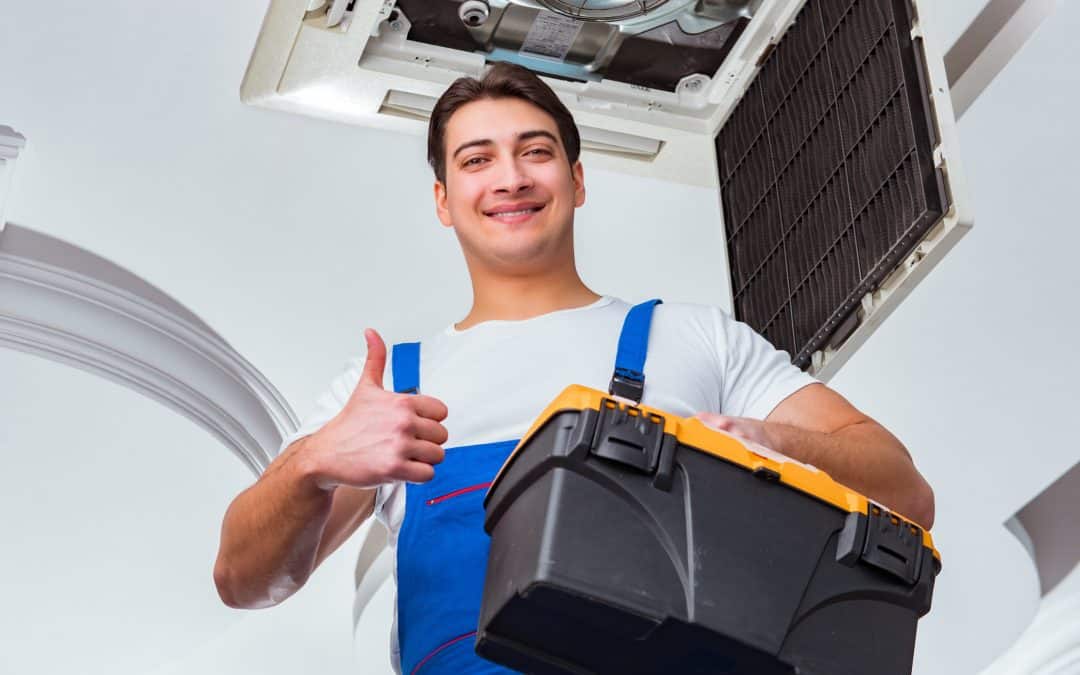A home’s HVAC system plays a crucial role in maintaining comfort and air quality. Proper upkeep of this system is essential to ensure it operates at maximum efficiency. For those new to homeownership, understanding HVAC systems basics is key to avoiding high energy bills and expensive repairs. To help you get a handle on the essentials, we’ve put together this guide covering the fundamentals of HVAC systems, so you can keep yours running smoothly year-round.
What Is an HVAC System?
HVAC stands for heating, ventilation, and air conditioning. Essentially, your HVAC system consists of all the equipment responsible for maintaining the temperature and airflow within your home. It includes components like the furnace, air conditioner, and ductwork, which work together to circulate air throughout the house.
Although many people think of HVAC in terms of heating and cooling, ventilation is equally important. HVAC systems are closed loops, meaning the air inside your home is continuously pulled into the system, heated or cooled, filtered, and then recirculated.
The filtration and ventilation aspects are critical for maintaining good indoor air quality. HVAC systems filter out dust, pet dander, allergens, and other particles as they cycle air through your home. The system also manages humidity levels and controls moisture, helping to prevent odors and regulate pollutants such as carbon dioxide.
In addition to making your home comfortable, HVAC systems contribute to the overall health and well-being of everyone living there.
Key HVAC Components
To better understand how your HVAC system works, it’s important to become familiar with its main components:
Refrigerant:
Refrigerant is the chemical responsible for cooling your home. It absorbs heat from the air and evaporates. After that, the HVAC system compresses it back into a liquid, releasing the heat outside.
Evaporator Coils:
These coils are made of copper tubing and contain the refrigerant. When the HVAC system pulls warm air from the house, this air passes over the cold evaporator coils. The refrigerant absorbs the heat, causing it to evaporate within the coils, effectively cooling the air. This chilled air is then recirculated throughout your home.
Compressor:
After the refrigerant absorbs the heat and turns into gas, it enters the compressor. The compressor raises the pressure and temperature of the gas to prepare it for cooling down in the next stage.
Condenser:
The condenser is where the refrigerant, now a hot gas, cools down as it passes through the condenser coils. This process releases heat outdoors and turns the gas back into a liquid. The condenser is usually located outside the house.
Furnace/Heat Pump:
In traditional systems, a furnace is used to heat the air. However, some modern systems in regions with milder winters use a heat pump, which handles both heating and cooling by reversing the flow of refrigerant depending on the season.
Ductwork:
Ducts carry the air throughout your home, distributing heated or cooled air to various rooms.
Vents:
These are the openings where air exits the ductwork and enters your living space. Vents can be found in walls, floors, or ceilings.
Blower Motor:
The blower motor powers the fan that circulates air through the HVAC system and into your home.
How Does an HVAC System Work?
Now that we’ve covered the components, let’s look at how these pieces work together. The blower motor pulls air from your home into the system. If you’re cooling your home, this air flows over the evaporator coils, where the refrigerant absorbs its heat. The cooler air is then pushed through the ducts and distributed back into your living space. In heating mode, the air passes over a heat exchanger (in systems with a furnace), which warms the air before sending it back into your home. With a heat pump, the heating process works similarly, except it reverses the cooling process to warm the air.
Different Types of HVAC Systems
Now that you understand HVAC basics, let’s explore the various types of systems available:
Cooling & Heating Split Systems (Central Air):
This is the traditional HVAC setup most commonly used in homes. It consists of an indoor unit housing the furnace and evaporator coils, while the outdoor unit contains the compressor and condenser.
Hybrid Split Systems:
Hybrid systems are an energy-efficient option for areas with mild winters. These systems switch between a gas furnace and an electric heat pump to optimize energy usage based on the weather conditions.
Ductless Mini-Splits:
A more compact version of the traditional split system, ductless mini-splits don’t use ducts to circulate air. Instead, they have an outdoor unit connected to one or more indoor units via refrigerant tubing and electrical wiring, delivering air directly to specific rooms.
Packaged HVAC Systems:
In this system, all the components—compressor, condenser, and evaporator—are combined into a single outdoor unit. These are ideal for homes with limited indoor space.
Geothermal HVAC Systems:
These highly efficient systems use the earth’s stable temperature to heat and cool your home. They rely on underground pipes that transfer heat between your house and the earth.
HVAC vs. Air Conditioning: What’s the Difference?
To wrap things up, let’s clarify a common misconception: HVAC refers to the entire system that handles heating, ventilation, and air conditioning. Air conditioning, on the other hand, specifically refers to the part of the system that cools the air.
In summary, having a good understanding of your HVAC system is crucial for maintaining comfort and air quality in your home. By knowing the basics, you can keep your system running efficiently and avoid unnecessary costs or repairs.
